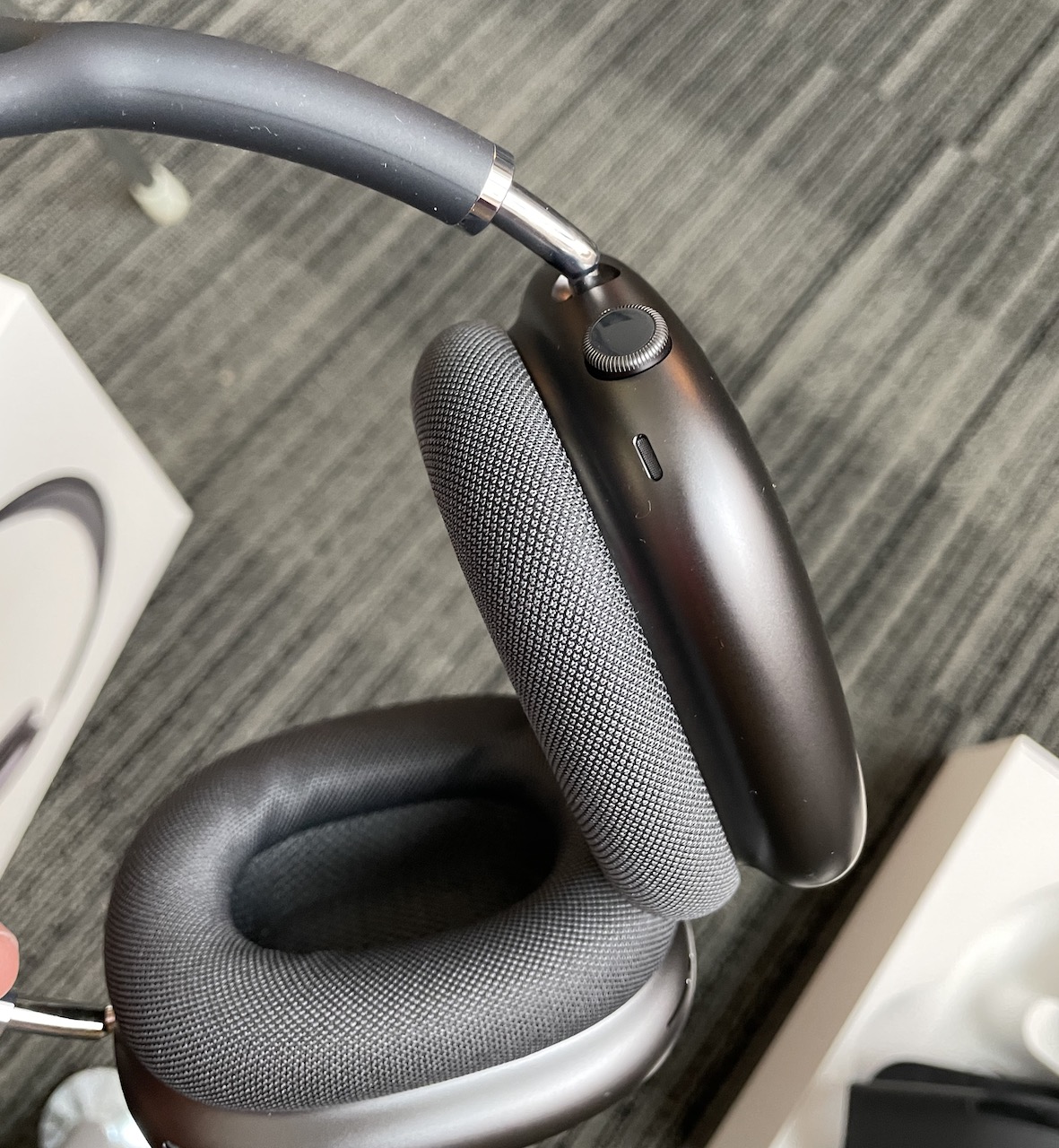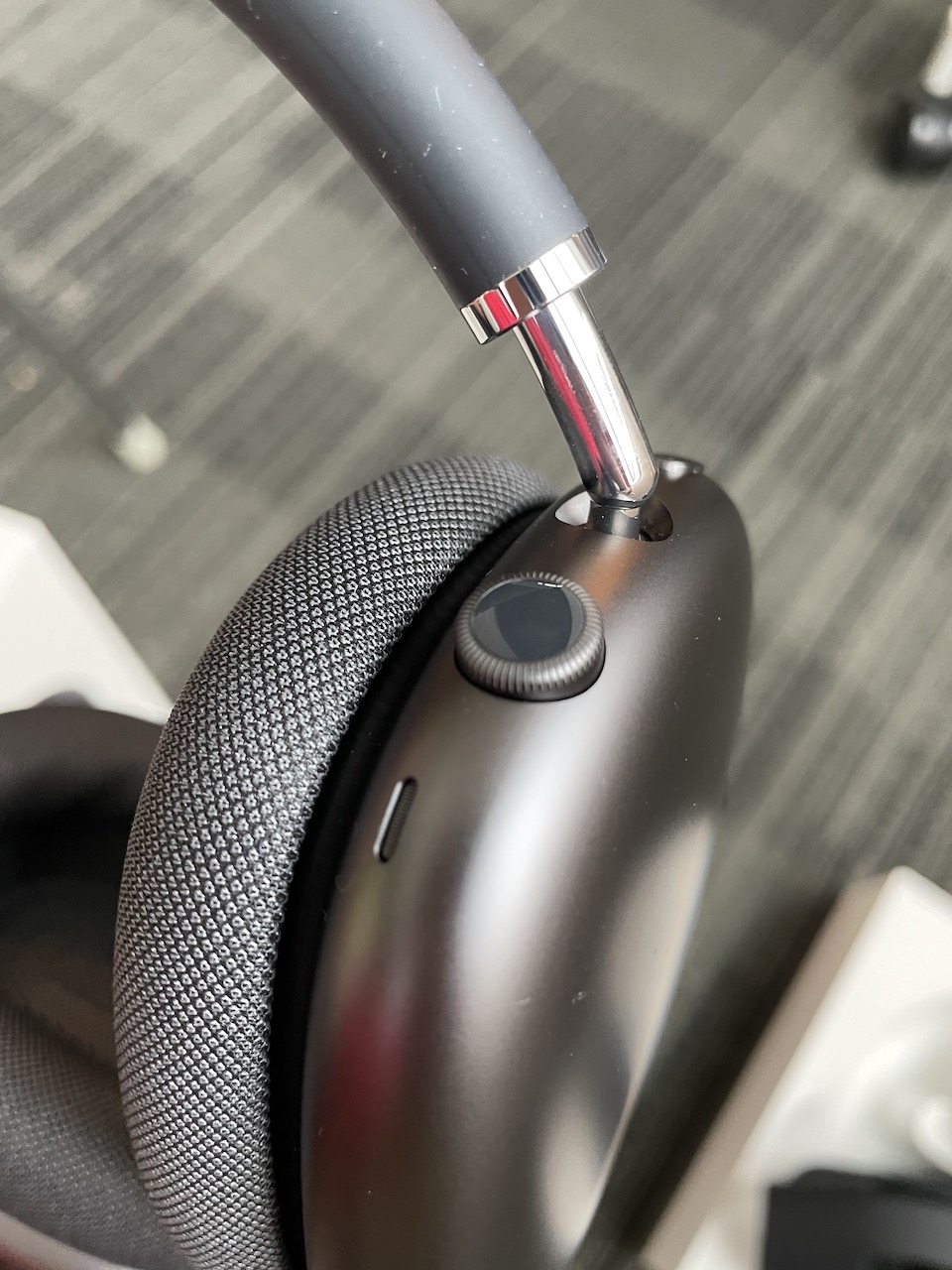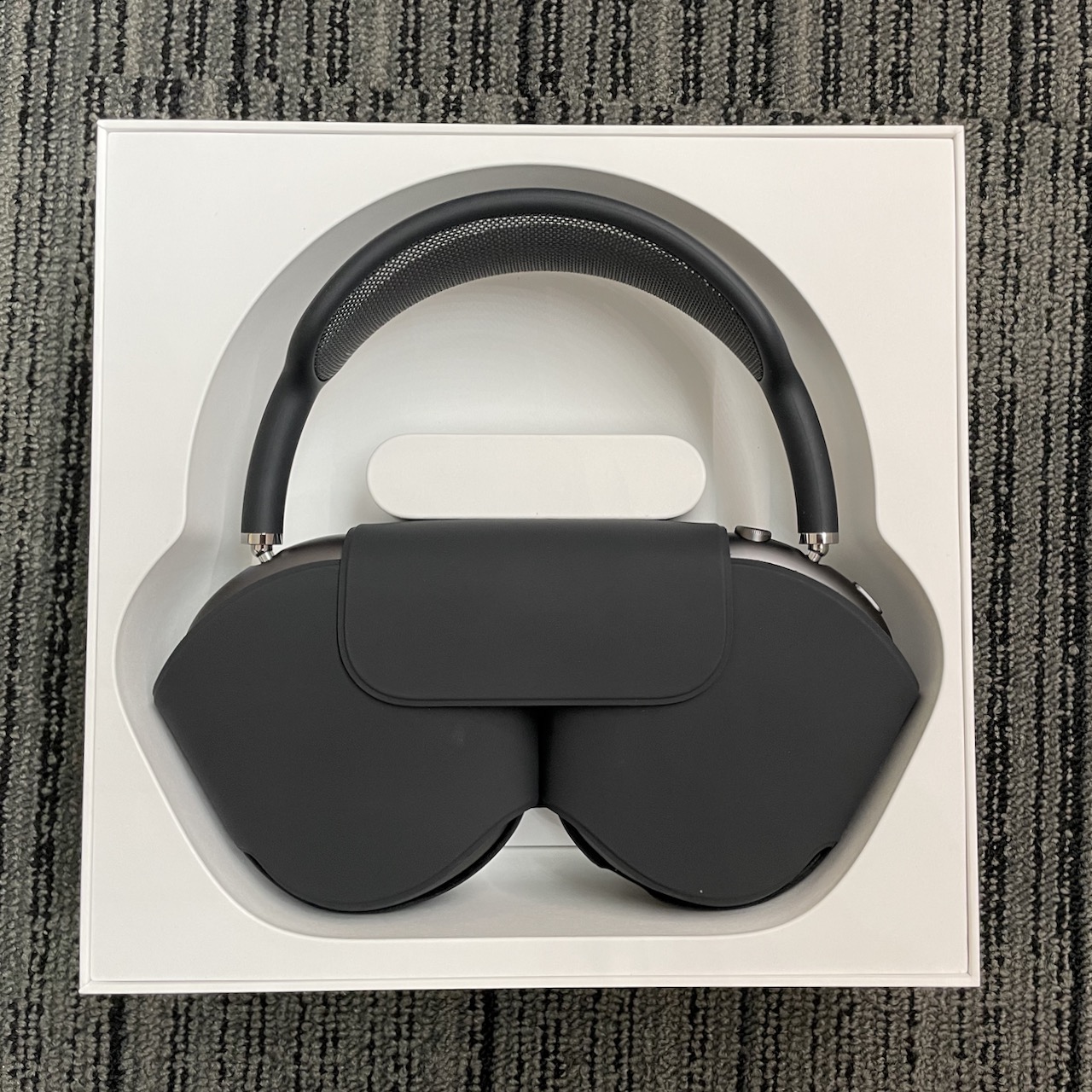Flying with the AirPods Max
24 December 2020
I recently had to fly cross-country after moving out of my school apartment, and I decided to take advantage of the opportunity to test the AirPods Max in their native habitat (at least pre-pandemic). For most frequent travelers, the appeal of active noise cancelling headphones is centrally to drown out the droning jet engines and to help the associated fatigue. In a pandemic era, most people are flying less, and of course may not need such features for an airplane specifically. But if you’re about to drop $550 on a new pair of AirPods Max, you’d probably like to know how they fare when everyone does start to resume travel.

Design & Construction
Arguably an entirely subjective choice, Apple’s design tends to be either extremely polarizing or widely accepted as a cultural norm. The AirPods Max arguably have both in a single product.
Let’s address the actual headphones first. The headphones are quite clean, with ear cups seemingly milled from a single piece of aluminum each, with no visible seams, save for a few very unnoticeable antenna lines on the bottom of the product. The entire headphone shape isn’t perfectly round, nor a square, but rather resembles the classic magnetic planar headphone squircle shape. The ear cups are solid, heavy, and appear quite durable. Since it’s all aluminum, they’re cold to the touch and stay that way throughout listening. Apple’s choice to carryover the digital crown from the Watch initially seems like a curious one, but after using the headphones fairly extensively, it’s a welcome addition. Twisting a dial to change volume just feels natural, and the physical button press isn’t clicky like the watch, but rather a soft, delightfully mushy press.

The ear cups attach to the headband with similarly solid stainless steel tubing, that extends (with a spring loaded mechanism) to fit your head shape. The physical connection point between the stainless steel tubing and the ear cup appears to be a ball-style joint that allows for free swiveling of the ear cup to match your head shape. I have a fairly wide head, but I actually preferred this mechanism over the individual “clicking” or latch-style mechanism that other headphones use. I found this gives a precise fit, without any noticeable increase in head clamping force.
The headband is also quite interestingly designed. It’s made of rubberized metal, and flexes when the headphones are on your head. The mesh material is suspended in the rubberized band, and acts as the cushion for the top band. Though all specifications say that the AirPods Max are quite heavy–and they are, at 384g–the band oddly feels weightless, and the weight is unnoticeable while stationary. If you move your head back and forth quickly, the weight is immediately noticeable, and these headphones carry some serious inertia. It’s not significant to be bothersome, nor cause them to slip off, but it is noticeably different than predominantly plastic consumer headphones like the Sony WH1000XM4s or Bose QC35s.

The soft, silicone-yet-microfiber-suede-lined case protects just the ear cups from, maybe, scratches? It’s honestly hard to tell what the case actually serves here (beyond setting the headphones to an “ultra-low power state” to conserve battery when in the case). Other than that, however, theres not much to say. It hardly protects the ear cups, with plenty of cutouts for I’m not sure what (they’re way too large to just be accessible for the lightning port). The case feels like an afterthought, and with visible seams that have clearly been glued together, is deeply disappointing. Aesthetics of the case aside, it also doesn’t protect the mesh headband at all, leaving the entire ear cup and above portion of the headphones open to the environment.
Portability & Practicality
The headphones don’t fold up like many others, like the Bose QC35s, although with the release of the QC 700s, it appears that trend is fading again (The QC15s didn’t fold, but the QC25 and QC35s did). As such these headphones do take up more space in my bag and are not nearly as easy to pack as the QC35s, which fold into a nice rectangular case. The AirPods Max, by comparison, swivel the ear cups so that they are flat, and then fit into the included case.
Sound
There’s no way around it–the AirPods Max just sound great. With a balanced soundstage akin to my Sennheiser HD650s, they sound relatively even, without the bass heavy preference of the QC35s. In an A/B test with the Bose QC35s on my flight, I found the Bose to feel comparatively shallow and extremely bass heavy. The AirPods Max, however, felt full and well balanced. I’m not too qualified to be the absolute expert on audio quality, but I will say that these sound tremendous.
Noise Cancellation
For travel, noise cancellation is an absolute must have. I have long held Bose as the gold standard for noise cancellation–after all, their A20 Aviation headset protects my ears when I’m the one flying. Their QC35s have slightly worse noise isolation, and as such slightly worse noise cancellation, when compared to the highly tuned, $1000 A20 Aviation pair, but I’ve always found their headsets to be comparatively good. Suffice to say, the AirPods Max meet or exceed the noise cancellation performance of the QC35s in most situations. On the airplane, when drowning out low, humming engine noise is of utmost importance, the AirPods Max perform flawlessly, without the “pressure” feeling I typically experience with the Bose. My favorite thing however, is actually a fix for a common quirk I experience with traditional ANC headphones. When subject to high wind conditions, either outside or on a flight (from the air nozzle), such wind noise often leaks into the headphones, as they’re simply using microphones to cancel ambient sound. The AirPods Max (either through what Apple dubs “Computational Audio” or through some other magic of having 9 microphones), initially suffers from this issue, but over time (say about 5 minutes) cancels out the noise of wind. As someone who was irritated by such a problem in the past, this is a welcome feature.
Wireless Experience
The wireless experience is on par with any other Apple-made Bluetooth headset–they pair with one tap after opening on any iOS device, and they’re instantly accessible from any device signed in to the same iCloud account. With macOS Big Sur and iOS 14, they seamlessly handoff from one device to another once media starts playing. I had no difficulty with dropping the Bluetooth connection throughout and was often surprised at how responsive the connection process appeared to be.
Final Thoughts
I’ve been impressed with the AirPods Max over the past week or so. $550 is a lot to drop on a single pair of headphones, and is significantly more expensive than your average “expensive” ANC headphone pair. I initially bought the headphones thinking I’d return them within the extended holiday return window, but now I’m not so sure.
A quick issue update
I experienced a weird issue where it appeared that the ear cups became “out of sync” with each other in terms of being on transparency/noise cancelling mode. One ear cup would be on transparency mode and the other would be either in off or noise cancelling mode. When I clicked the transparency/noise cancelling button, they appeared to switch. A quick restart fixed the problem, but I was unable to figure out how or why this happened.